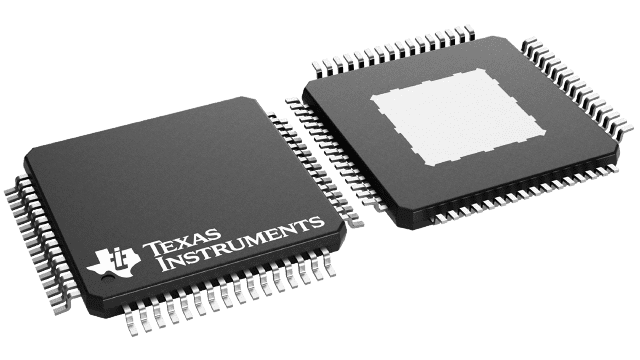Texas Instruments
TAS5705PAP
TAS5705PAP
Regular price
$3.71 USD
Regular price
Sale price
$3.71 USD
Unit price
per
Couldn't load pickup availability
TAS5705PAP Texas Instruments - Yeehing Electronics
20-W stereo, 8- to 23-V supply, digital input, open loop Class-D audio amplifier w/ speaker EQ & DRC
Pricing (USD)
| Quantity | Unit Price |
| 1 — 99 | 9.746 |
| 100 — 249 | 7.946 |
| 250 — 999 | 6.245 |
| 1,000 + | 3.71 |
The above prices are for reference only.
Specifications
| Manufacturer | Texas Instruments |
| Product Category | Audio Amplifiers |
| RoHS | Y |
| Series | TAS5705 |
| Product | Audio Amplifiers |
| Class | Class-D |
| Output Power | 20 W |
| Mounting Style | SMD/SMT |
| Type | 2-Channel Stereo or 3-Channel Stereo |
| Package / Case | HTQFP-64 |
| Audio - Load Impedance | 8 Ohms |
| THD plus Noise | 0.12 % |
| Minimum Operating Temperature | 0 C |
| Maximum Operating Temperature | + 85 C |
| Packaging | Reel |
| Description/Function | Headphone/Speaker |
| Height | 1 mm |
| Input Type | Single |
| Length | 10 mm |
| Output Current | 20 mA |
| Output Type | 2-Channel Stereo, 3-Channel Stereo |
| Supply Type | Triple |
| Width | 10 mm |
| Brand | Texas Instruments |
| Number of Channels | 2 Channel |
| Supply Current - Max | 38.5 mA, 60 mA |
| Development Kit | TAS5705EVM2 |
| Dual Supply Voltage | 3.3 V, 9 V, 12 V, 15 V, 18 V |
| Ib - Input Bias Current | - |
| Maximum Dual Supply Voltage | 3.6 V, 23 V |
| Minimum Dual Supply Voltage | 3 V, 8 V |
| Moisture Sensitive | Yes |
| Operating Supply Current | 23 mA, 30 mA |
| Output Signal Type | Differential, Single |
| Pd - Power Dissipation | 600 mW |
| Product Type | Audio Amplifiers |
| Factory Pack Quantity | 1000 |
| Subcategory | Audio ICs |
| Unit Weight | 0.009108 oz |
For more information, please refer to datasheet
Documents
| TAS5705PAP Datasheet |
More Information
The TAS5705 is a 20-W, efficient, digital audio power amplifier for driving stereo bridge-tied speakers. Two serial data inputs allow processing of up to four discrete audio channels and seamless integration to most digital audio processors and MPEG decoders. The device accepts a wide range of input data and clock rates. A fully programmable data path allows these channels to be routed to the internal speaker drivers or output via the line-level subwoofer or headphone PWM outputs.

